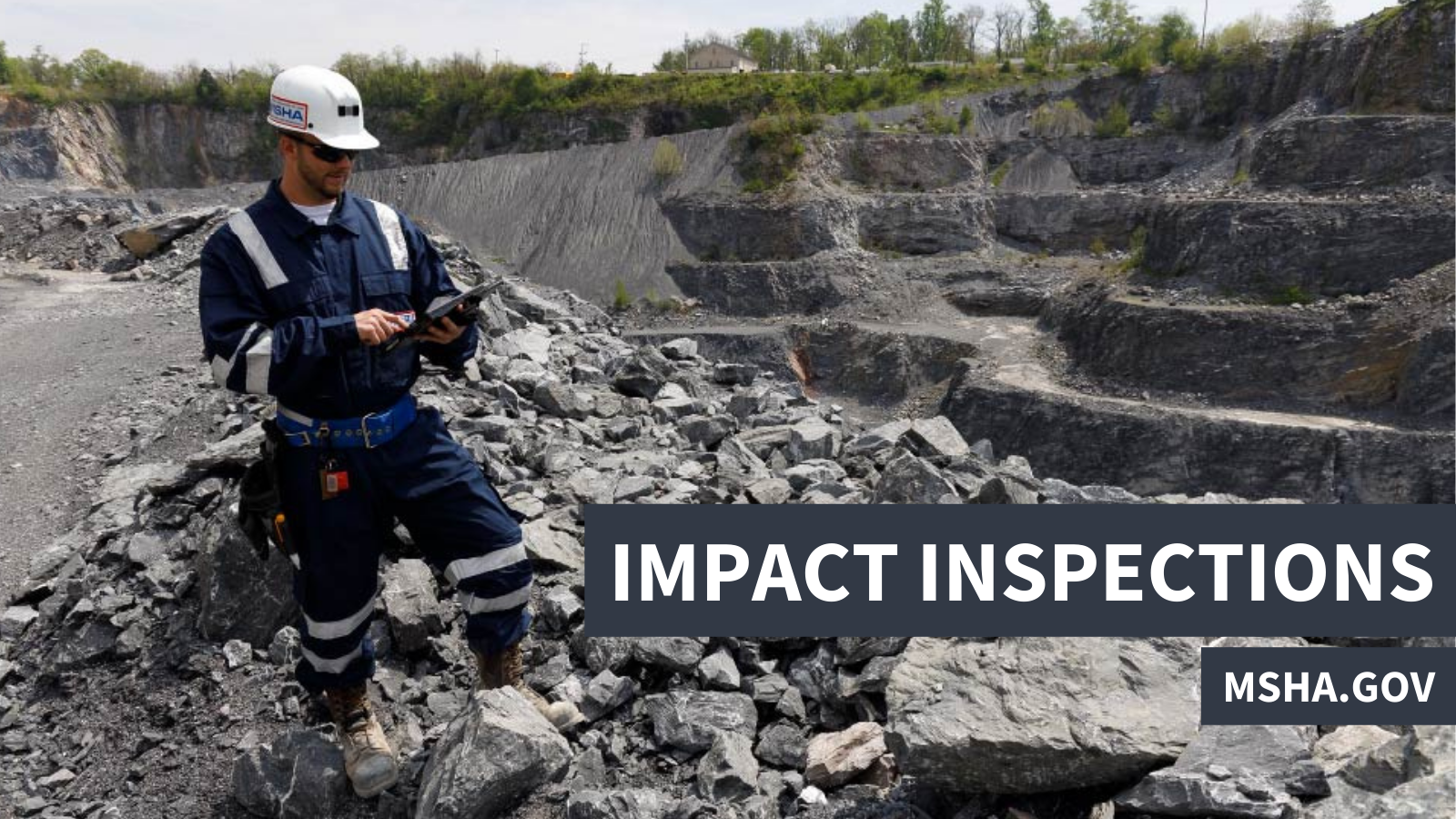
“The Mine Safety and Health Administration remains troubled by the fact that our impact inspections continue to discover the same hazards we’ve identified as root causes for fatal accidents and that we know can cause serious occupational illnesses” –Assistant Secretary for Mine Safety and Health Chris Williamson
The following three statements are true about mining:
- It is a strenuous job with many hazards.
- Miners have the right to a safe workplace.
- Mine operators are responsible for finding and fixing problems at their mine before accidents occur.
The Mine Act sets federal health and safety standards to reduce risk and help protect more than 314,000 miners from hazards at more than 12,500 U.S. mines. Yet we continue to see too many preventable fatalities, injuries and illnesses. At the Mine Safety and Health Administration, we’re committed to using every tool in our enforcement toolbox and making the most of our resources to have the maximum impact when it comes to protecting miners.
That’s why our inspectors have conducted monthly impact inspections this year to enforce mandatory health and safety standards in coal mines, gravel pits, salt mines and other types of mines across the country.
MSHA first began these targeted inspections in April 2010 after an explosion at the Upper Big Branch Mine in West Virginia claimed the lives of 29 miners and continued conducting them through March 2020.
What makes them particularly effective is that, unlike our mandatory inspection program that follows a planned schedule, impact inspections focus on mines that repeatedly violate safety and health standards. We will conduct an impact inspection at a mine when any of the following are reported:
- A pattern of the number and type of violations or incidents, injuries and illnesses.
- A history of Significant & Substantial (S&S) citations during regular inspections.
- Other compliance concerns uncovered during planned inspections or raised by a complaint.
The focus of the inspection is specific to the mine because it is based on its current performance and compliance history. For example, if a mine has a pattern of citations for not properly guarding belt conveyor components, an MSHA impact inspection may focus on evaluating the presence and maintenance of guards on every belt conveyor at the mine.
Mine operators are responsible for monitoring compliance. Anyone can use MSHA’s Significant & Substantial (S&S) and Pattern of Violations (POV) calculators to learn about a mine’s compliance with safety and health standards.
The results of impact investigations are publicly released the following month on our website. From January through August, more than 1,900 violations were uncovered, including those related to electrical hazards, a lack of machine guarding, inadequate ventilation and accumulated combustible materials, among many others.
We will continue to use every tool that Congress gave us to protect miners’ safety and health, and we urge the mining community to work with us to eliminate well-known safety and health hazards that can cost miners their lives.
Sam Creasy is the district manager in the Barbourville District office. Follow MSHA on Twitter/X and Facebook.

 U.S. Department of Labor Blog
U.S. Department of Labor Blog